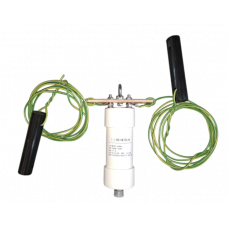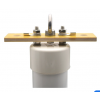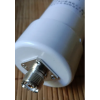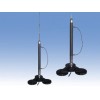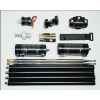Shopping Cart
0 item(s) - R0.00- 3D Printing and Plastic peripherals (8)
- 433Mhz and Lora (9)
-
Amateur Radio (655)
- - Antenna Analyzer (12)
- - APRS (12)
- - ATU (5)
- - CW (1)
- - Digital Modes (9)
- - DMR (4)
- - Echolink (10)
- - Enclosure (13)
- - Eshail-2 (QO-100) (67)
- - GPS (9)
- - iGate (1)
- - Microcontrollers (43)
- - Microphone (1)
- - Power Supply (7)
- - Programming Cable (6)
- - QRP (9)
- - Radio interface (21)
- - Receiver (10)
- - Repeater (4)
- - RF Amplifiers (20)
- - RF Kits (19)
- - RF modules (116)
- - Rotator (1)
- - SDR (76)
- - Spectrum Analyzer (4)
- - SWR (9)
- - Transceiver (60)
- - WSPR (5)
- Antennas and Acc (321)
- Audio and Video (28)
- Bargain Box (1)
- Battery (3)
- Bluetooth (11)
- Cables (37)
- Computer Peripherals (104)
- Connectors (93)
- Data acquisition (1)
- Display (2)
- Electromechanical (25)
- Enclosure (12)
- GPS (7)
- Hardware (4)
- Home Automation (128)
- Inverter (9)
- Liquid (7)
- Lora (8)
- Microcontrollers (120)
- Modbus (3)
- MQTT (14)
- Network Radio (3)
- Networking (8)
- Power (133)
- Power supply (49)
- Radio Interface (17)
- RF Modules (142)
- ROIP (2)
- Satellite (94)
- Security (13)
- Sensor (17)
- Solar (14)
- Test and Measurements (66)
- Tools and Equipment (8)
- VOIP (10)
- Weather (1)
CB Dipole antenna with Balun Center 27.185 MHz
Ex Tax: R797.00
Add to Compare
Citizen Band (CB) Dipole antenna with Balun 1:1 200w max Center 27.185 MHz
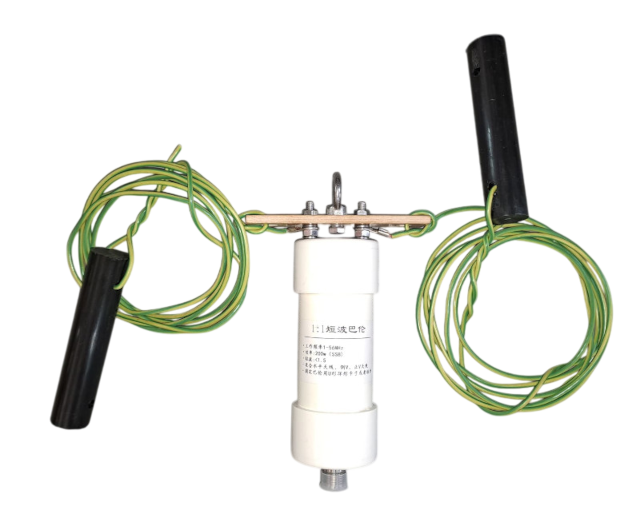
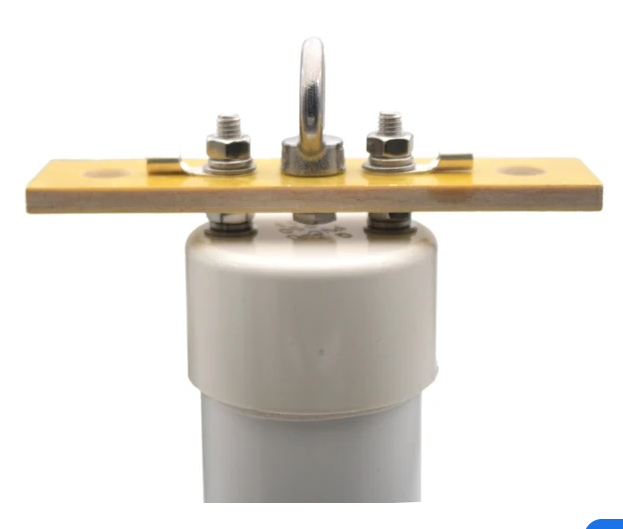
Deployments covered: Horizontal dipole and Inverted‑V.
Center balun: 1:1 current balun, 50 Ω unbalanced to 50 Ω balanced, 1–56 MHz, 200 W, waterproof (e.g., DYKB 1:1 HF).
Target frequency: 27.185 MHz (CB Channel 19).
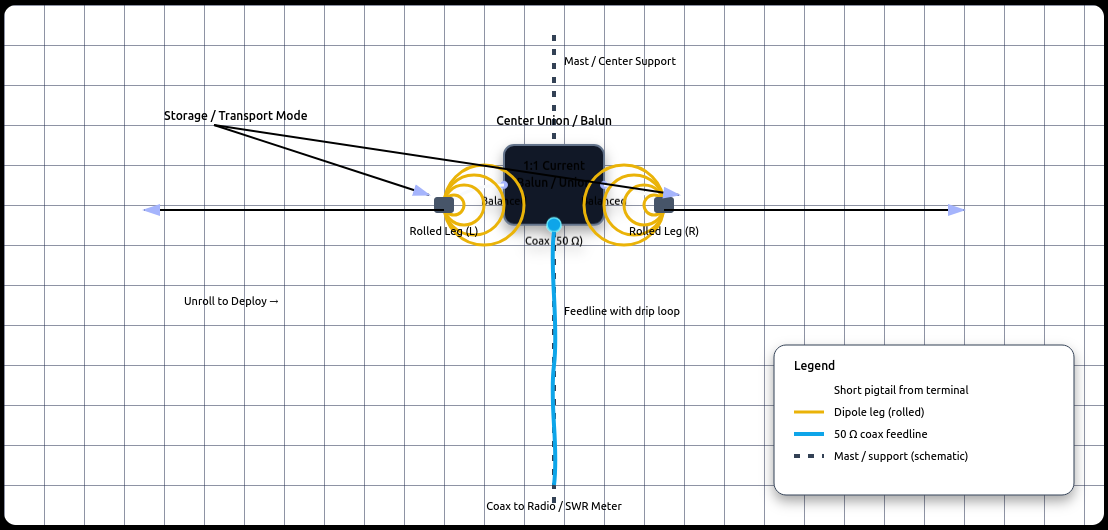
Quick Reference: Lengths at 27.185 MHz
Handy rule‑of‑thumb formulas for a half‑wave dipole (total tip‑to‑tip):
Meters:Total length ≈ 143 / f(MHz)
Feet:Total length ≈ 468 / f(MHz)
At 27.185 MHz:
-
Horizontal dipole (flat, 180° included angle)
• Total length: ≈ 5.260 m (≈ 17.215 ft)
• Each leg: ≈ 2.630 m (≈ 8.608 ft) -
Inverted‑V (typical 120° included angle at the apex)
Start ~2% shorter than the flat‑top to account for end‑effects and sloping legs.
• Total length (start): ≈ 5.155 m (≈ 16.871 ft)
• Each leg (start): ≈ 2.578 m (≈ 8.436 ft)
Tip: Always cut a little longer (e.g., +2–3 cm per leg) and trim during SWR tuning.
Angle multipliers (guide):
-
180° (flat): ×1.00
-
~150°: ×0.99
-
~120°: ×0.98
-
~90°: ×0.96
Bill of Materials (BOM)
-
1× 1:1 current balun, DYKB 1:1 50 Ω, 1–60 MHz, ≥200 W, weatherproof enclosure.
-
~12 m of antenna wire (1.5² copper; PVC‑insulated).
(Allows extra for trimming, strain relief, and tie‑offs.) -
2× End insulators (UV‑resistant).
-
SO239 Connector on balun
Required for instelation
-
Mast or center support (non‑conductive top recommended).
-
Rope/cord (UV‑stable) and tie‑off hardware (e.g., pulleys, D‑rings).
-
Mounting hardware for balun (U‑bolt/clamps or plate + stainless fasteners).
-
Optional: Drip loop for coax, ferrites for additional choking, lightning arrestor and ground rod.
Tools: Measuring tape, side cutters, crimp/solder tools, electrical tape/heat‑shrink, SWR meter or antenna analyzer, basic hand tools, safety gear.
Safety & Siting
-
Keep ends of the dipole at least 3 m above ground and well clear of people, pets, and walkways.
-
Maintain >2 m horizontal clearance from metal objects (gutters, fences, power lines [never above/beside]).
-
Observe local regulations for CB antennas and structures.
-
For lightning protection, install an arrestor at the entry point and bond to earth with the shortest route.
Construction (common to both deployments)
-
Prepare the legs
-
Cut two wires to the starting lengths from Section 1 (longer by ~2–3 cm for trimming).
-
Strip ~10–15 mm insulation at the balun end of each wire.
-
-
Attach to the balun
-
Identify the balanced output terminals of the 1:1 balun (often two posts or lugs).
-
Secure one leg to each terminal (crimp lugs or solder), then strain‑relieve with a tie‑wrap/rope so the wire lugs don’t carry mechanical load.
-
-
End insulators & tie‑offs
-
Fit an insulator to each far end.
-
Leave 10–20 cm of spare wire beyond the insulator to fold back for fine tuning (do 1not cut flush yet).
-
Add short pigtails of cord between wire and anchor points to reduce mechanical stress.
-
-
Feedline
-
Connect your coax to the balun’s unbalanced (50 Ω) input (often SO‑239).
-
Form a drip loop under the balun.
-
(Optional) Add clip‑on ferrites to the coax within 10–20 cm of the balun as an extra common‑mode choke.
-
-
Weatherproofing
-
Seal all exposed conductors/lugs with self‑amalgamating tape and over‑wrap with UV electrical tape.
-
Ensure the balun enclosure faces cable glands downward.
-
Deployment A: Horizontal Dipole
Layout (top view, not to scale):
End support Center mast/balun End supporto----------------------[ BALUN ]-----------------------o<——— leg L ——> <——— leg R ——>
Steps
-
Mount a center mast high enough to keep the legs reasonably horizontal.
-
Hoist the balun at the top.
-
Walk out each leg to its end support, keeping the wire straight and level (allow a slight droop/catenary).
-
Tie off with cord; do not fully tension yet.
-
Route the coax down the mast with UV ties every 50–80 cm.
-
Proceed to Section 7 (Tuning).
Heights: A center height of 6–10 m works well. Higher usually improves take‑off and reduces ground losses for DX; lower favors NVIS‑like local coverage (on 27 MHz this effect is modest but still noticeable).
Deployment B: Inverted‑V
Layout (side view, not to scale):
apex (balun)/\/ \/ \o o <- end insulators to anchors
Key geometry
-
Included angle at apex: Aim for ~120° (each leg ~60° from vertical) for a good all‑round pattern.
-
End height: Keep leg ends >3 m off ground.
-
Symmetry: Keep leg lengths and angles as symmetrical as the site allows.
Steps
-
Mount the balun at the mast/apex.
-
Run each leg down to corner anchors (trees, posts).
-
Keep a gentle slope; avoid sharp bends.
-
Tie off with enough slack for seasonal movement (trees) and for tuning adjustments.
-
Route coax down the mast with a drip loop and strain relief.
-
Proceed to Section 7 (Tuning).
Pattern notes: The inverted‑V tends to give a more omnidirectional azimuth pattern than a flat dipole, with a somewhat higher take‑off angle—good for local/regional contacts. The flat dipole has more pronounced broadside gain.
Tuning (SWR/Resonance)
Goal: Center the lowest SWR around 27.185 MHz.
Equipment: CB SWR meter or antenna analyzer.
-
Baseline measurement
-
With the antenna installed, measure SWR across 26.8–27.6 MHz.
-
Note the frequency of minimum SWR (Fmin).
-
-
Interpret
-
If Fmin < 27.185 MHz, the antenna is too long → trim both legs equally.
-
If Fmin > 27.185 MHz, the antenna is too short → unfold a little more wire at the ends or add small extensions.
-
-
Trim in small steps
-
Work in 5–10 mm per leg steps (≈ 10–20 mm total) and re‑measure.
-
Keep the antenna symmetrical (equal leg lengths).
-
-
Target SWR
-
A well‑built dipole with a 1:1 current balun should achieve SWR ≤ 1.5:1 near center frequency.
-
Coax length does not fix antenna resonance; use coax length to reach the shack, not to “tune”.
-
-
Final weatherproofing
-
When done, trim any excess tail beyond the end insulators, fold and tape neatly, and re‑seal.
-
Example Cut List (starting values)
For 27.185 MHz using insulated copper wire:
-
Horizontal (flat)
• Cut 2 × 2.64 m (2.630 m + ~1 cm margin).
• Expect to trim a few mm during tuning. -
Inverted‑V (~120°)
• Cut 2 × 2.59 m (2.578 m + ~1 cm margin).
If your included angle is closer to 90°, start nearer 2.53 m per leg (≈ 4% shorter than flat) and trim up.
Mounting the Balun & Strain Relief
-
Mount the balun so that mechanical load is carried by a top eye/plate or an added sling, not the electrical terminals.
-
Use stainless hardware. Keep the enclosure oriented to shed water; add a drip loop.
Coax, Choking & RFI Hygiene
-
A good 1:1 current balun at the center minimizes common‑mode current and keeps the feedline from becoming part of the antenna.
-
For extra insurance, place clip‑on ferrite beads (e.g., mix 31/43) on the coax within 10–20 cm of the balun.
-
Keep coax away from the outer half of the legs for at least 0.5 m.
Troubleshooting
-
High SWR everywhere → Check short/open at feedpoint; verify both legs connected to separate balanced terminals; inspect balun/coax connectors.
-
Resonance too low despite trimming → Surroundings (metal roof, gutters, trees) coupling; raise the antenna or move away from structures.
-
Pattern nulls where you need coverage → Try the inverted‑V for rounder coverage, or rotate a flat dipole broadside to the desired direction.
-
RF in shack (mics/PCs acting up) → Add/relocate ferrites; ensure station ground and single‑point bonding.
Notes on Environment & Materials
-
Wire choice: Insulated wire slightly shortens the electrical length vs. bare—your final trim will account for this automatically.
-
Weather: UV and wind fatigue are real; use UV‑resistant cord and tape. Inspect annually.
-
Portable ops: For quick‑deploy, pre‑tie leg ends to lightweight reels; mark 27.185 MHz trim points.
Record Your Final Lengths
Use this table to keep your tuned values for future rebuilds.
|
Deployment |
Leg‑L (m) |
Leg‑R (m) |
Apex angle |
Center height |
Notes |
|---|---|---|---|---|---|
|
Horizontal |
180° |
||||
|
Inverted‑V |
120° |
Radiation Patterns (What to Expect)
Important: Real‑world patterns depend strongly on height above ground (in wavelengths), ground conductivity, nearby structures, and the exact apex angle (for inverted‑V). The sketches below are qualitative guides at ~0.5–0.7 λ center height (≈ 5.5–7.7 m at 27 MHz) over average ground.
A) Horizontal Dipole (Flat‑Top)
-
Azimuth (plan view) at ~0.5–0.7 λ height:
Broadside max →____ ____/ \ / \| | null | |\______/ \______/←Broadside maxWire runs left↔right; nulls off the **wire ends**.
-
Elevation (broadside cut) at ~0.5 λ height:
Gain^ /\| / \ Main lobe at a **moderate angle** (~25–35°)|___/ \____ Secondary lobe(s) begin to appear as height → 0.7–1.0 λ0° 20° 40° 60° 80° 90° (elevation)
Key behavior
-
Broadside figure‑8 azimuth pattern; point the broadside toward desired stations.
-
As height increases past ~0.6–0.7 λ, multiple elevation lobes form and the lowest‑angle lobe strengthens (good for DX).
-
Lower heights (<0.3–0.4 λ) push energy higher (more local coverage, less low‑angle DX).
Inverted‑V (~120° apex angle)
-
Azimuth (plan view) at ~0.5–0.7 λ apex height:
Nearly omnidirectional____________ ____________/ \/ \| |\______________/\______________/Slight broadside preference remains but **nulls are filled in** vs. flat‑top.
-
Elevation (through apex plane):
Gain^ /\| / \ Main lobe at **slightly higher angle** than flat‑top|___/ \____ (often by ~5° depending on angle/height)0° 20° 40° 60° 80° 90°
Key behavior
-
Azimuth becomes rounder than a flat dipole; handy where you want coverage in most directions (portable, limited space).
-
Take‑off angle tends a bit higher than a flat‑top at the same apex height.
-
Narrower apex angles (~90°) further raise take‑off angle and slightly shorten resonant length; wider angles (~150°) approach the flat‑top pattern/length.
Height Cheat‑Sheet (27 MHz, λ≈11.0 m)
|
Center/Apex Height |
In Wavelengths |
Typical Outcome |
|---|---|---|
|
3 m |
~0.27 λ |
Higher elevation angle; stronger local/regional. |
|
5.5–6 m |
~0.5–0.55 λ |
Good general‑purpose; moderate take‑off (~25–35°). |
|
7.5–8 m |
~0.68–0.73 λ |
Lower main lobe angle, some secondary lobes; better DX potential. |
|
≥11 m |
≥1.0 λ |
Multiple lobes and nulls; alignment and height become critical. |
Orientation tip: For a flat dipole, aim the broadside toward desired DX (ends point toward azimuth nulls). For an inverted‑V, this is less critical due to the rounder pattern, but the wire’s broadside still shows slight preference.
Happy building and good DX!
Write a review
Your Name:Your Review: Note: HTML is not translated!
Rating: Bad Good
Enter the code in the box below:
Giga Technology © 2025

